The Intel Xeon E7-8800 v3 Review: The POWER8 Killer?
by Johan De Gelas on May 8, 2015 8:00 AM EST- Posted in
- CPUs
- IT Computing
- Intel
- Xeon
- Haswell
- Enterprise
- server
- Enterprise CPUs
- POWER
- POWER8
Xeon E7 v3 System and Memory Architecture
So, the Xeon E5 "Haswell EP" and Xeon E7 "Haswell EX" are the same chip, but the latter has more features enabled and as result it finds a home in a different system architecture.
Debuting alongside the Xeon E7 v3 is the new "Jordan Creek 2" buffer chip, which offers support for DDR4 LR-DIMMs or buffered RDIMMs. However if necessary it is still possible to use the original "Jordan Creek" buffer chips with DDR3, giving the Xeon E7 v3 the ability to be used with either DDR3 or DDR4. Meanwhile just like its predecessor, the Jordan Creek 2 buffers can either running in lockstep (1:1) or in performance mode (2:1). If you want more details, read our review of the Xeon E7 v2 or Intel's own comparison.
To sum it up, in lockstep mode (1:1):
- The Scalable Memory Buffer (SMB) is working at the same speed as the RAM, max. 1866 MT/s.
- Offers higher availability as the memory subsystem can recover from two sequential RAM failures
- Has lower bandwidth as the SMB is running at max. 1866 MT/s
- ...but also lower energy for the same reason (about 7W instead of 9W).
In performance mode (2:1):
- You get higher bandwidth as the SMB is running at 3200 MT/s (Xeon E7 v2: 2667 MT/s), twice the speed of the memory channels. The SMB combines two memory channels of DDR-4 1600.
- Higher energy consumption as the SMB is running at full speed (9W TDP, 2.5 W idle)
- The memory subsystem can recover from one device/chip failure as the data can be reconstructed in the spare chip thanks to the CRC chip.
This is a firmware option, so you chose once whether being able to lose 2 DRAM chips is worth the bandwidth hit.
Xeon E7 vs E5
The different platform/system architecture is the way that the Xeon E7 differentiates itself from the Xeon E5, all the while both chips have what is essentially the same die. Besides being able to use 4 and 8 socket configurations, the E7 supports much more memory. Each socket connects via Scalable Memory Interconnect 2 (SMI2) to four "Jordan Creek2" memory controllers.
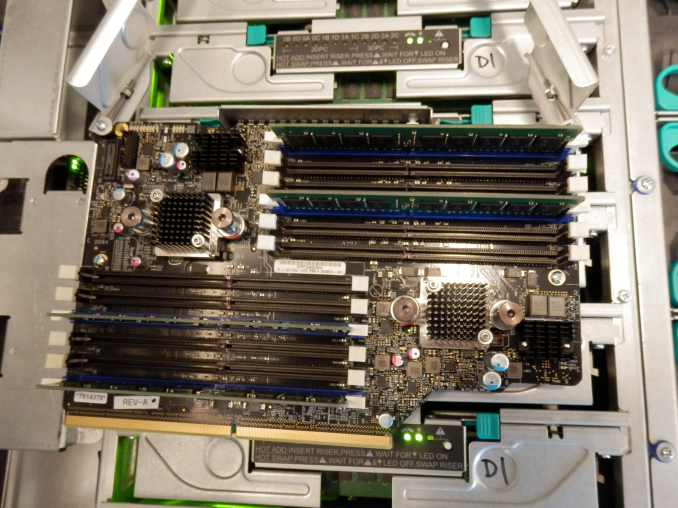 Jordan Creek 2 memory buffers under the black heatsinks with 6 DIMM slots
Jordan Creek 2 memory buffers under the black heatsinks with 6 DIMM slots
Each of these memory buffers supports 6 DIMM slots. Multiply four sockets with four memory buffers and six dimm slots and you get a total of 96 DIMM slots. With 64 GB LR-DIMMs (see our tests of Samsung/IDT based LRDIMMs here) in those 96 DIMM slots, you get an ultra expensive server with no less than 6 TB RAM. That is why these system are natural hosts for in-memory databases such as SAP HANA and Microsoft's Hekaton.
There is more of course. Chances are uncomfortably high that with 48 Trillion memory cells that one of those will go bad, so you want some excellent reliability features to counter that. Memory mirroring is nothing new, but the Xeon E7 v3 allows you to mirror only the critical part of your memory instead of simply dividing capacity by 2. Also new is "multiple rank sparing", which provides dynamic failover of up to four ranks of memory per memory channel. In other words, not can the system shrug off a single chip failure, but even a complete DIMM failure won't be enough to take the system down either.


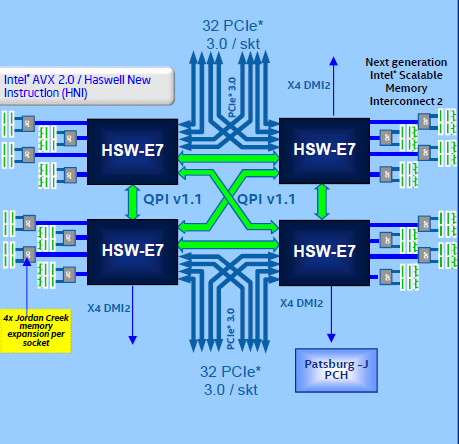
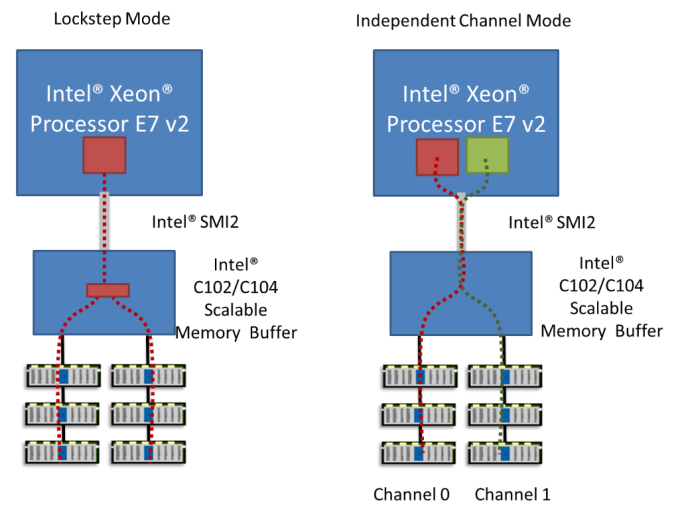
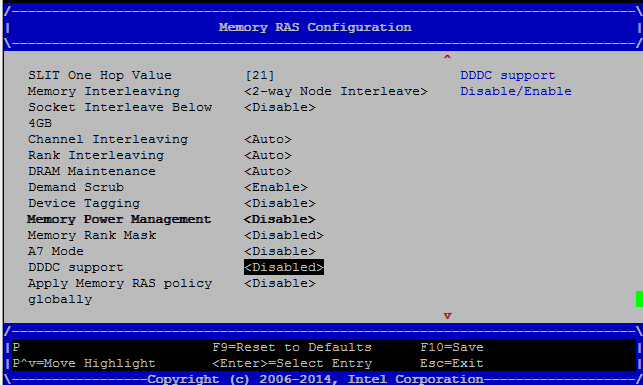
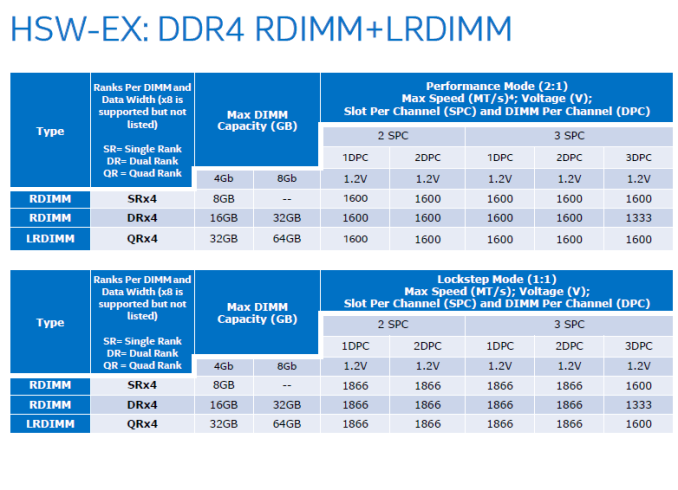








146 Comments
View All Comments
MyNuts - Tuesday, May 12, 2015 - link
Charles Babbage would be upsetquadibloc - Thursday, May 14, 2015 - link
I'm shocked to hear that Oracle and IBM are charging more for their SPARC and PowerPC chips, respectively, than Intel is charging for comparable x86 chips - or, at least, I presume they are, if servers using those chips are more expensive. Since x86 has the enormous advantage of being able to run Microsoft Windows, the only way other ISAs can be viable is if they offer better performance or a lower price.Kevin G - Thursday, May 14, 2015 - link
Actually IBM comes in cheaper than Intel for comparable POWER8 hardware. IBM now is offering the processor to outside system builders so the actual prices are some what known. Tyan used to have the raw prices on their site but I can't find them again.Regardless, this article indicates that they top out at $3000 which is less than equivalent Xeon E7's.
kgardas - Thursday, May 21, 2015 - link
Sure, SPARC and POWER are (was in case of POWER) more expensive, but usually hardware price is nothing in comparison with software price if you are running enterprise. Also SPARC is also Oracle preferred over POWER/Itanium by Oracle's price ratios... Anyway, POWER8 looks so powerful that it may even be cheaper software wise in comparison with SPARC, but that would need some clever Oracle DB benchmarking...HighTech4US - Friday, May 15, 2015 - link
Power 9 will be available when?Phiro69 - Friday, May 15, 2015 - link
I wanted to compare the E7's in this review to the E5's reviewed a few months back in your benchmark comparison tool, but I'm not seeing any of this data in it? Is it going to be there?